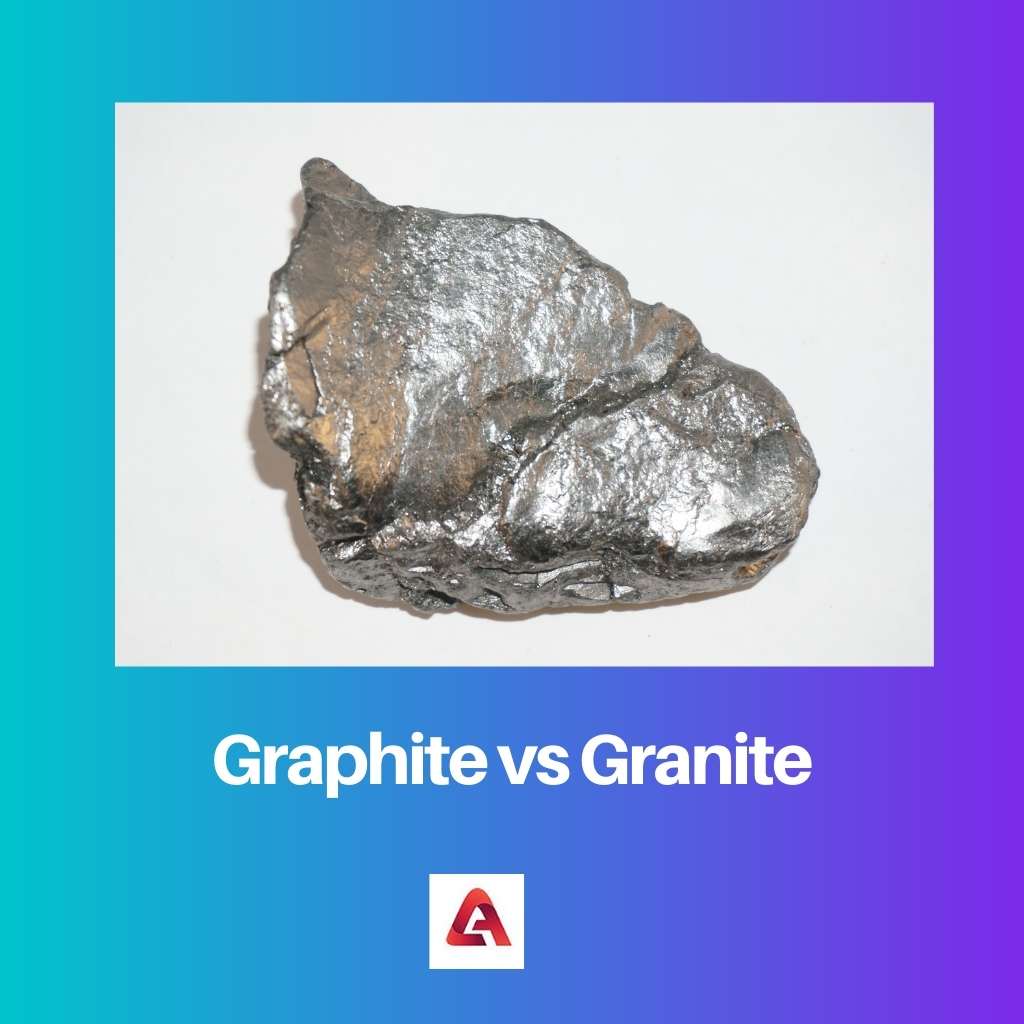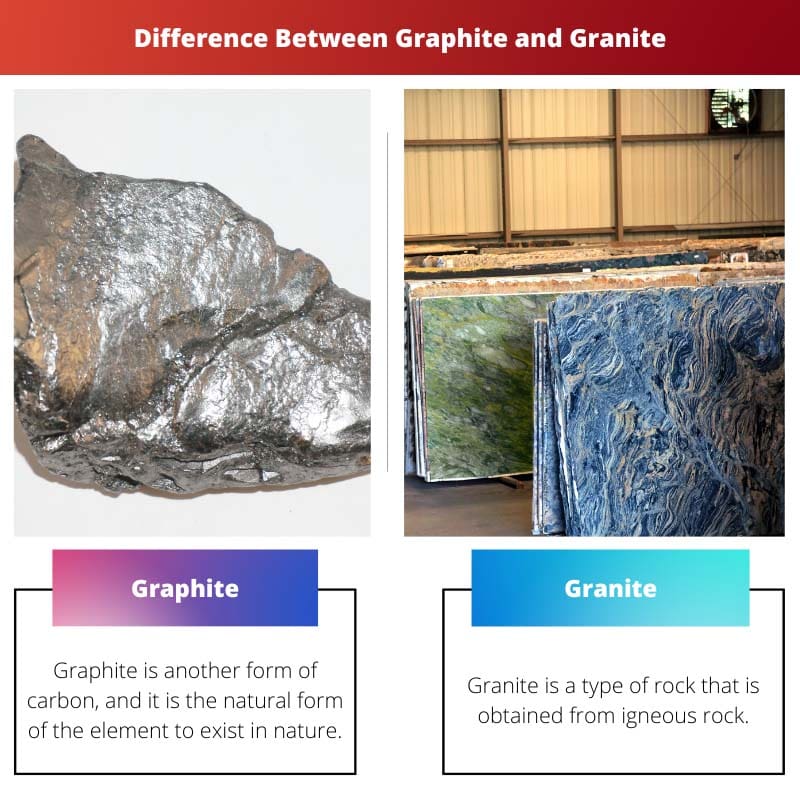In the earth’s crust, one could find an immense treasure of minerals, precious stones, natural gases, and much more.
And no one ever knows accurately how much of the earth’s hidden jewels are explored or untouched, and the numbers known to us are only the speculations given by the scientists.
The resources that are received from the earth take up to millions or thousands of years to achieve their present form.
Key Takeaways
- Graphite is a soft, black, and highly conductive mineral used in pencils and lubricants, while granite is a hard and durable igneous rock used in construction and decoration.
- Graphite has a layered structure, while granite has a crystalline structure.
- Various industrial and artistic applications use graphite and granite, respectively.
Graphite vs Granite
Graphite is a soft, black, opaque form of carbon with a high electrical and thermal conductivity. It is used in a variety of applications. Granite is a type of igneous rock that is very hard, granular, and commonly used in building due to its durability, hardness, and aesthetic qualities.

Graphite is another form of carbon, and it is the natural form of the element to exist in nature.
The structure of the element is in crystalline form and appears to be with a metallic luster, and is soft and slippery in texture. It also occurs in four different forms and has a very low density in comparison to others.
Granite is a type of rock that is obtained from igneous rock. The formation of such rocks is done when the magma solidifies and cools down in the underground form.
And because of this, these rocks are said to be highly rich in alkali metal oxides and silica. Also, they are available in different patterns and colors now in the market.
Comparison Table
| Parameters of Comparison | Graphite | Granite |
|---|---|---|
| Occurrence | In metamorphic rocks, igneous rocks, and meteorite | In igneous rocks |
| Color | Black | Various colors |
| Texture | Soft | Hard |
| Density | Less | More |
| Electric Conductance | Good conductor | Bad conductor |
What is Graphite?
Graphite is said to be a crystalline form of the element carbon, and in the structure of the element, the carbon atoms are grouped in a hexagonal pattern.
Under normal conditions, it is the most stable form of carbon, and it occurs naturally in this form.
But when graphite comes under or is treated at high pressures and temperatures, it changes its structure or form and becomes a diamond.
Amorphous graphite, lump graphite, small flakes of graphite in crystalline form, and pyrolytic graphite are the four main types of graphite that can be found as ores.
These ores can be found in metamorphic rocks, igneous rocks, and meteorites, among other places.
Quartz, micas, calcite, and tourmaline are some of the minerals that can be discovered with graphite.
The following are the major exporting countries of mined graphite, in order of tonnage: China, Mexico, Canada, Brazil, and Madagascar are among the countries involved.
It’s a good conductor of heat and electricity. It’s good for solar panels, batteries, and electrodes because of its high conductivity. It is the major component for manufacturing pencils and lubricants.

What is Granite?
Granite is a type of intrusive igneous rock that is mostly made of quartz, plagioclase, and alkali feldspar. It’s made up of silica-rich magma and alkali metal oxides that cool and solidify underground over time.
It is found in igneous intrusions throughout the Earth’s continental crust. These range in size from a few millimeters wide dikes to hundreds of square kilometers of batholiths.
Granite is part of a wider group of granitic rocks known as granitoid, which are made up primarily of feldspars and coarse-grained quartz in various proportions.
Although most granitic rocks possess mica or amphibole minerals, a handful (known as leucogranites) have essentially no dark minerals. It is also categorized as non-conduction material that is a poor electricity conductor.
It is mainly used in construction, and the marble industry is one of the oldest types of industry in the world. The stone is used to form walls, sculptors, artifacts, paving, rock climbing, etc., are uses of granites.
Unlike graphite, granite is available in varied textures, colors, and coarse.

Main Differences Between Graphite and Granite
- Graphite is one of the minerals that is found in metamorphic rocks, igneous rocks, and meteorites, while comparatively, on the other hand, Granite is said to be found mainly in igneous rocks.
- The color of the graphite may appear as black, or it can be distinguished as steel grey or even deep blue this is noticed when light is passed through the graphite while comparatively, on the other hand, the color of the granite can be distinguished in most of the colors found in the palate.
- The texture of the graphite, when touched and felt by someone, is said to be quite soft and slippery, while comparatively, on the other hand, the texture of the granite, when touched or felt, is said to be hard and coarse.
- The density of the graphite is said to be quite low, and it ranges at a scale of 2.09 g/cm3 to 2.23 g/cm3 while comparatively, on the other hand, the density of granite is said to be more and it is measured on the scale between 2.65 g/cm3 to 2.75 g/cm3.
- Graphite being a form of carbon, is quite a good conductor of electricity, whereas comparatively, on the other hand, granite is not a good conductor of electricity.




